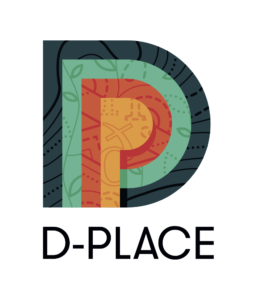The Greek Program “SPUR” ~ Towards A New Spur For EU Democracy Building Learn And Engagement
 The Greek PROGRAM “SPUR” – Towards a New Spur for EU Democracy Building learn and engagement
The Greek PROGRAM “SPUR” – Towards a New Spur for EU Democracy Building learn and engagement
The project is an initiative of Nea Smyrni municipality, a municipality located about 4 km southwest of central Athens, Greece, named so after the city Smyrna (today’s İzmir in Turkey), from where a large number of refugees arrived and settled in the Nea Smyrni area following the 1922 population exchange between Greece and Turkey.
The municipality implements this project with the support of the “Europe for Citizens” programme of the European Union.
The main goal of “SPUR” program is to highlight and assess both the value of solidarity and volunteering in the current context of economic and humanitarian crisis inside United Europe as well as to improve the conditions for civic and democratic participation of citizens providing them, as a New Spur, New forms of Societal and intercultural engagement for the enhancement of civic and democratic participation at national and European level.
These forms, away from extremist or populist movements and radicalized behaviors and beyond xenophobia, intolerance and any discrimination against the vulnerable or excluded people within EU societies and underprivileged and disadvantaged populations, which often include youngsters and people of non – EU origins:
a) Stabilize the social welfare, health, employment, education, environment, culture, etc.systems, which brutally affected in times of economic recession and poverty
b) Protect further the fundamental rights, in particular of minorities,
c) Help restore law and civil parity for a decent living,
d) Promote and foster the economy and the development and finally,
e) Consolidate the faith, to the principles and values on which the European ideal is founded, in particular of the different types of Eurosceptics, and to put forward the achievements of the United Europe and the cost of no Europe creating a new positive narrative for Europe and Europe integration.
For more information: Vanessa Kavvada ~ vannyiason
Go to: dnnspur.gr
D-PLACE –The Database Of Places, Language, Culture And Environment
 From the foods we eat, to who we can marry, to the types of games we teach our children, the diversity of cultural practices in the world is astounding. Yet, our ability to visualize and understand this diversity is often limited by the ways it traditionally has been documented and shared: on a culture-by-culture basis, in locally-told stories or difficult-to-access books and articles.
From the foods we eat, to who we can marry, to the types of games we teach our children, the diversity of cultural practices in the world is astounding. Yet, our ability to visualize and understand this diversity is often limited by the ways it traditionally has been documented and shared: on a culture-by-culture basis, in locally-told stories or difficult-to-access books and articles.
D-PLACE, which stands for ‘Database of Places, Language, Culture, and Environment,’ represents an attempt to bring together this dispersed corpus of information. It aims to make it easy for individuals to contrast their own cultural practices with those of other societies, and to consider the factors that may underlie cultural similarities and differences.
So far, D-PLACE contains cultural, linguistic, environmental and geographic information for over 1400 human ‘societies’. A ‘society’ in D-PLACE represents a group of people in a particular locality, who often share a language and cultural identity. All cultural descriptions are tagged with the date to which they refer and with the ethnographic sources that provided the descriptions. The majority of the cultural descriptions in D-PLACE are based on ethnographic work carried out in the 19th and early-20th centuries (pre-1950).
In linking societies to a geographic location (using a reported latitude and longitude) and language, D-PLACE allows interested users to simultaneously consider how cultural practices relate to linguistic ancestry, practices of neighbouring cultures, and the environment. D-PLACE makes visualizing these relationships easy, with search results available as a table, on a map, or on a linguistic tree.
While D-PLACE is designed to be expandable, most of the initial cultural data in D-PLACE were originally compiled by two anthropologists, George P. Murdock and Lewis R. Binford, each relying on hundreds of individual references. Murdock and Binford’s core datasets are described in more detail in the Data Source section.
The D-PLACE team is made up of scientists with a broad range of interests who share a passion for interdisciplinary inquiry.
More information on: citing D-PLACE, related publications, and the technology and source code.
D-PLACE is a work in progress. We welcome suggestions for corrections and/or for additional data.
Funding
D-PLACE was developed with generous support from the National Evolutionary Synthesis Center (www.nescent.org) and the Max Planck Institute for the Science of Human History (www.shh.mpg.de/en)
- Page 2 of 2
- previous page
- 1
- 2


